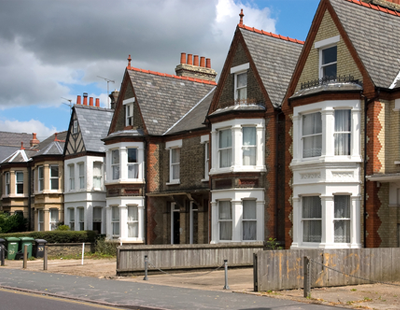
HMO properties look very good on paper. Why charge a single rent when you can charge four or five lots of rent? An HMO will operate very well if it’s let the majority of the year, however a lot of landlords do struggle with this. Some landlords opt for student housing whereas other landlords may aim for working professionals. Both markets are very crowded throughout the country and it seems every landlord is trying to cash in on the HMO bandwagon.
Although an HMO can be a great investment, in reality, landlords will face more void periods than single residential lets and may have larger outgoings in terms of bills and maintenance. Often enough, HMO landlords will pay their tenant’s bills. During a void this can start to drain pockets, as a result of outgoing mortgage payments, council tax, etc. Furthermore, communal areas will need maintaining. Some landlords will opt for a cleaner whereas other landlords will either clean themselves or try and persuade the tenants to do so.
Tenants under single residential tenancies pay their own bills and void periods tend to be a lot shorter. Once a family rents a property, they’re generally there for at least a year if not a few years. It’s rare for a tenant to rent a room for an extended period of time and is usually a stop gap for education or a work contract. When you start taking these things into consideration, rental figures start to even out, especially over a long period of time such as ten years.
How much does an HMO really cost?
Setting up an HMO can cost a lot of money, more than a traditional refurb. Again, this is because of the competition in the market. As landlords are trying to get their properties let of fast, the increase in competition has witnessed some pretty breath-taking HMOs. The level of refurb now pretty much needs to be outstanding in order to get tenants in a respectable time. Four of five years ago, landlords were able to let rooms pretty quick and presentation wasn’t as important as it is now.
In addition, landlords may choose to rent out ensuite rooms or kitchenettes or even studios. This of course will cost a lot more money in comparison to refurbishing a standard let. Nonetheless, once an HMO has been refurbished, the property is then worth more than it would be as a single let, so investors are able to withdraw some of their capital.
The government is also tightening up on HMO licensing, which is another cost in addition to everything else. Letting agents will generally charge more to manage an HMO, as there’s a lot more needed, such as periodic fire alarm checks for instance. Also, although agents are managing one property, they’re still managing multiple tenancies and will charge accordingly.
How can HMO landlords be different?
Successful HMO landlords seem to start advertising their rooms before the refurb has even completed. Building relationships is key and doing this whilst the refurb is taking place makes perfect sense. A lot of landlords will wait until everything has finished and then enlist an agent to try and let the rooms. Although this may work, you are leaving yourself open to wasted void periods.
Other landlords may offer incentives such as reduced deposits or reduced letting agent fees (the landlord would reimburse the letting agent). It goes without saying but location is vital when creating an HMO. Many landlords aim for properties within the main City Centre or in the thick of the student areas. Although properties in such areas may be at a premium, you’ll find they’ll generate the most rent once converted.
Smart landlords adapt
There are many financial products available in terms of refurbishments and HMOs. Smart landlords are constantly educating themselves and property is an area where someone can always learn something, no matter how much experience you have.
HMO conversions are and always will be great investments, however do bear in mind the associated costs and the huge rise in competition. If you buy in the right area and actively let the property before the refurbishment has even completed, then you can avoid the additional expenditure of voids. Nonetheless, this is a crowded market and only seems to be gaining more popularity. As they always say, do your due diligence not only the property, but also in the market you wish to enter. See what the competition is doing and if there is a demand for what you intend to do.
Martin Alexander is a mortgage advisor at Expert Mortgage Advisor.
Want to comment on this story? If so...if any post is considered to victimise, harass, degrade or intimidate an individual or group of individuals on any basis, then the post may be deleted and the individual immediately banned from posting in future.













.jpg)









%20(002).png)




.png)






Join the conversation
Jump to latest comment and add your reply
Personally i have steered clear of H M O s , good yields, but lot of hassle and generally the wrong kind of tenants for me.
I have a 4 bedroomed maisonette and I considered this, but the cost of conversion was prohibitive, plus the hassle involved for not that great a return, I decided against it.
They seem to have wained in popularity since their introduction and quite a few agents are unwilling to take them on.
In Scotland an HMO licence is needed if more than 2 unrelated adults share any property. However there is a severe shortage of quality HMO properties, resulting 17 groups wanting the last one I had vacant and a 25% increase in market rent compared with 2 years earlier. HMO properties are also safer with fire doors, alarms etc and annual electrical as well as gas safety checks.
Please login to comment